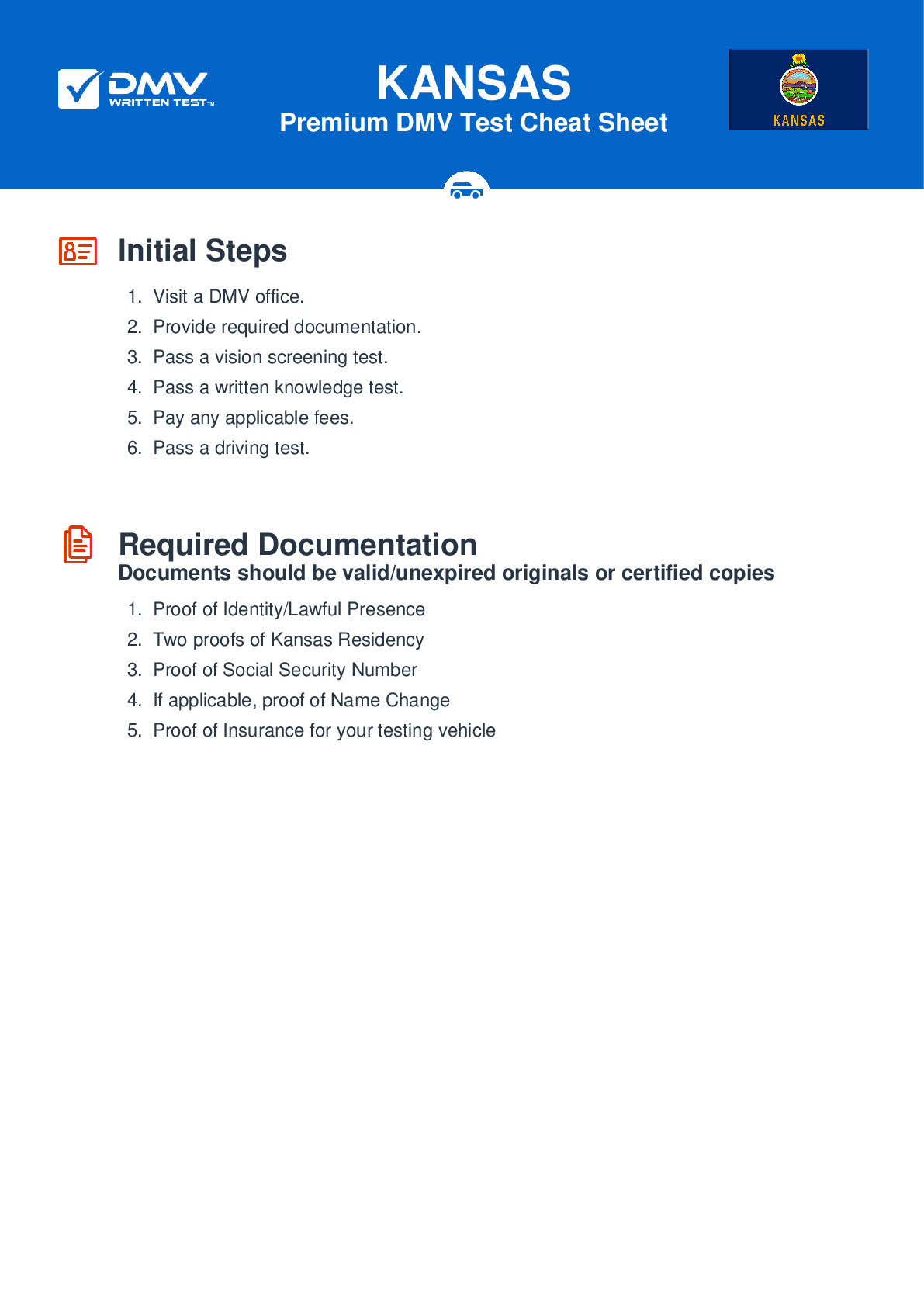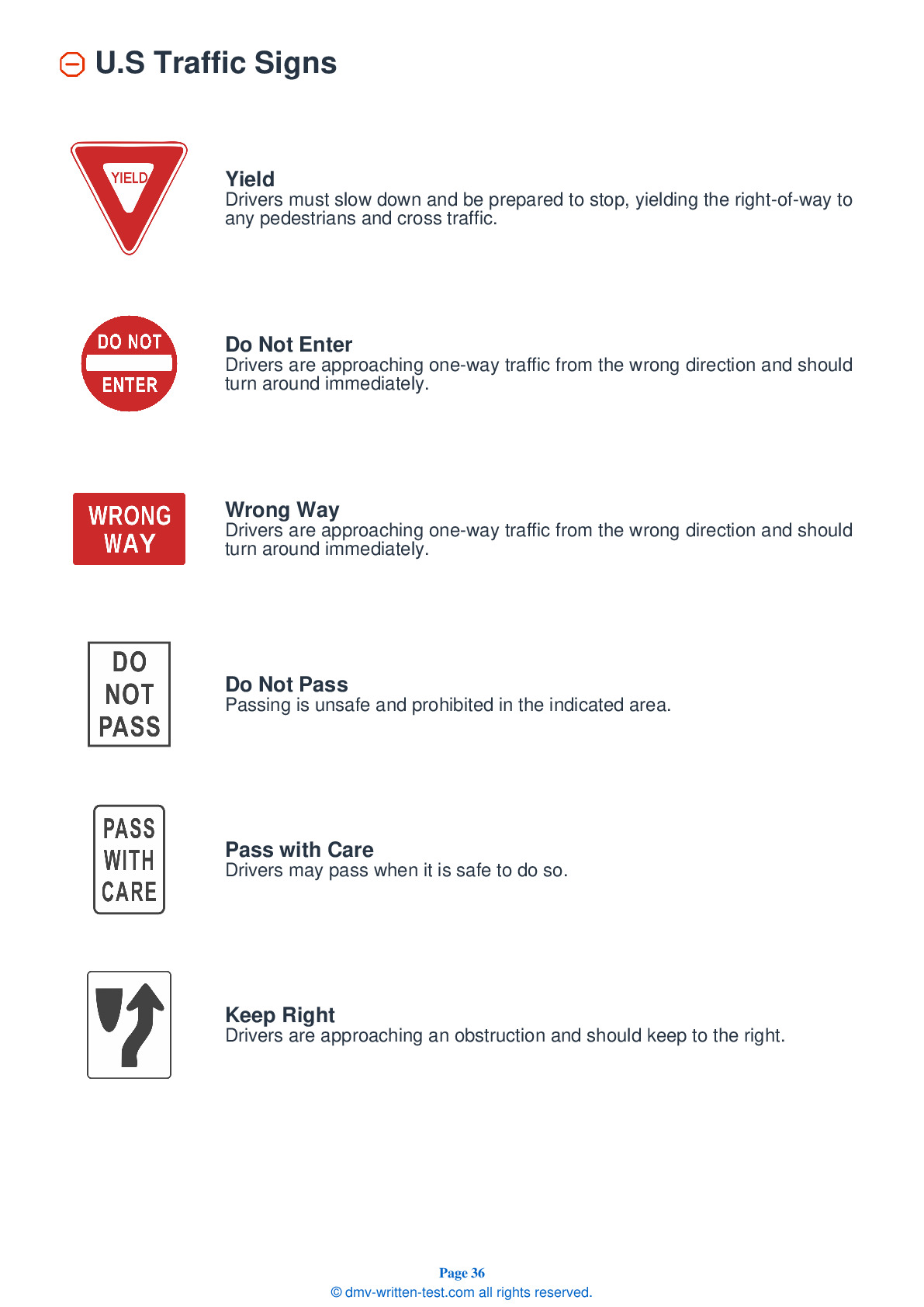2025 Kansas Permit Test 16
The following questions are from real DMV written tests. These are some of the actual permit questions you will face in Kansas. Each permit practice test question has three answer choices. Select one answer for each question and select "grade this section." You can find this button at the bottom of the drivers license quiz. For a complete list of questions and answers for Kansas please visit https://cheat-sheets.dmv-written-test.com/en/kansas/car.
Number of Tests
Number of Question
Passing Score
17. The driver ahead of you stops at a crosswalk. What should you do?
Explanation
You must not pass a vehicle that is stopped at a crosswalk. There may be pedestrians crossing the street that you cannot see. Instead, stop, proceeding only after all pedestrians have crossed.
18. Before you change lanes, you should check your mirrors and:
Explanation
Before changing lanes, it is very important to check behind you. You should look over your shoulder to ensure that you are not getting in the way of vehicles in the lane you want to enter. Before changing lanes, you should also ensure that no drivers are attempting to drive into the same spot from a different lane.
19. When driving under low-visibility conditions due to fog, you should:
Explanation
When driving in fog, you should slow down and use your low beam lights. If the fog is so dense that you cannot see, pull off the road and wait for the fog to clear.
20. Which of the following statements is correct?
Explanation
Use your right foot for both braking and accelerating. You should apply the brakes gently with increasing pressure so that your vehicle stops gradually and smoothly.
21. If a child is riding a bicycle near your vehicle:
Explanation
Children on bicycles are sometimes unpredictable. Young bicyclists are especially likely to make surprising changes in direction. Remember that children and bicycles are both small in stature and may become difficult to see.
22. When driving at night, you should:
Explanation
Increase your following distance when it is difficult to see due to darkness. Use headlights to increase visibility, following the rules for proper use of high beams and low beams. Avoid looking directly at the headlights of an oncoming vehicle to avoid being blinded by the glare.
23. When being passed by another vehicle:
Explanation
When being passed, you must yield to the passing vehicle and not increase your speed. Allow the vehicle to safely merge back into your lane.
24. If you are driving and a tire suddenly goes flat, you should:
Explanation
If a tire blows out or suddenly goes flat while you are driving, grip the steering wheel firmly and keep the vehicle aiming straight. Take your foot off the accelerator and do not brake. Allow the vehicle to slow by itself and use the brakes gently, but only if necessary. Pull off the road when it is safe to do so.
25. On a freeway, you should look farther ahead than you would on a city street:
Explanation




